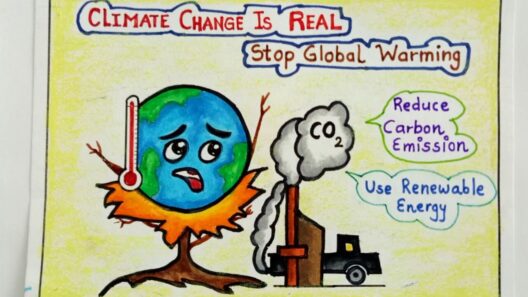In the context of climate change and its far-reaching implications, the role of educational institutions in fostering a culture of sustainability cannot be overstated. Schools, often bustling hubs of activity, are fundamentally responsible for shaping the values and behaviors of future generations. Therefore, initiating energy conservation efforts at schools is not merely a matter of utility savings; it transcends into an ethical obligation towards the planet. Small acts can lead to significant impacts, cultivating a mindset conducive to sustainable living.
Every day, schools consume an exorbitant amount of energy in various forms, from heating and cooling systems to lighting and electronic devices. The myriad of devices that students and teachers utilize is often overlooked. Yet, each computer, projector, and smartboard contributes to the school’s overall energy consumption. By fostering an awareness of energy use through small, actionable steps, schools can significantly reduce their energy footprint.
One common observation is that lights are frequently left on in unoccupied classrooms and hallways. This habitual oversight can lead to glaring inefficiencies. A simple yet effective measure involves installing motion-sensor lighting systems that automatically turn off when rooms are vacant. This not only saves energy but also teaches students about the importance of awareness regarding their surroundings and the impact of their actions on the environment. Incorporating reminders, such as “Turn off the lights!” signs near switches, can further instill this mindful practice.
Windows are another critical aspect of energy conservation. Schools are often equipped with large windows that can be utilized to maximize natural light during sunny days. Encouraging students and staff to open blinds and curtains can diminish the reliance on artificial lighting. Furthermore, implementing a program where students are responsible for closing these blinds at the end of the day can foster a sense of community and responsibility regarding energy use.
Beyond mechanical and structural adjustments, the behavior of students and staff is equally paramount. Educating the school community about the impact of energy conservation on climate change is essential. Campaigns showcasing statistics about energy usage and its effects can be insightful. Workshops or assemblies focusing on sustainability can inspire student-led clubs aiming to promote energy-efficient practices. When students embrace these values, they are more likely to integrate them into their daily lives, extending the effect beyond the school walls.
Moreover, addressing the issue of computer usage highlights another area for potential energy savings. Many schools utilize desktop computers that consume substantial energy, especially when left idle. Advocating for the use of laptops can reduce energy consumption significantly. Additionally, implementing policies that require students to log off computers when not in use can foster responsible technology use. These minor adjustments can contribute to a marked decrease in energy consumption.
The timing of energy use within schools can also be optimized. Scheduling classes, using energy-intensive equipment during off-peak hours, and turning down heating or cooling systems during weekends or after school can vastly contribute to energy savings. Engaging students in the scheduling process, allowing them to participate in decision-making regarding energy use, can also instill valuable lessons on responsibility and environmental stewardship.
Incorporating energy-efficient appliances is another significant avenue for energy conservation. Schools can invest in Energy Star-rated appliances and equipment, ensuring that every device operates at optimal efficiency. Collaborating with local businesses or cities to obtain discounts or grants can alleviate the financial burden of this transition. It is worthwhile to encourage students to research and present their findings on energy-efficient technologies, fostering a culture of innovation and creativity.
The role of outdoor spaces should not be neglected. Many schools have underutilized outdoor areas that can be transformed into natural learning environments. Utilizing landscaping techniques such as planting trees and shrubs can assist in reducing heating and cooling costs as well. Encouraging classrooms to conduct lessons outside can harness natural light and fresh air, positively impacting students’ well-being while simultaneously reducing energy use indoors.
Partnerships with parents and the community can significantly enhance energy conservation efforts. By sending home informative newsletters or organizing community events focusing on sustainability, schools can extend their influence and promote energy-saving practices within households. Engaging parents in energy audits of their homes can amplify the actions taking place within school walls and create a shared commitment towards sustainability.
Moreover, leveraging technology can streamline energy management processes. Implementing an energy monitoring system that tracks energy use in real-time can provide valuable insights into consumption patterns. By analyzing this data, schools can identify peak usage times and potential areas for improvement. Students interested in technology can even participate in the process, creating an educational opportunity that underscores the importance of data in driving sustainable practices.
Creating a culture of conservation is a multifaceted endeavor that requires collective effort and collaboration. Each small act contributes to a larger movement, one that underscores the imperative necessity of sustainability in a world grappling with climate change. Through the integration of education, awareness, and actionable strategies, schools can become leaders in energy conservation, influencing future generations to embrace sustainability as a way of life.
Ultimately, every small act indeed has the potential for a big impact. When students, teachers, and staff collectively engage in energy conservation efforts at school, they are not just saving energy; they are fostering an ethos of responsibility and respect for the environment. Together, these actions lay the groundwork for a sustainable future, proving that even the smallest gestures can ripple outward, creating a transformative wave of change. As such, it is imperative to continue advocating for these practices within educational settings, ensuring that the lessons learned are carried forward into the broader world.






